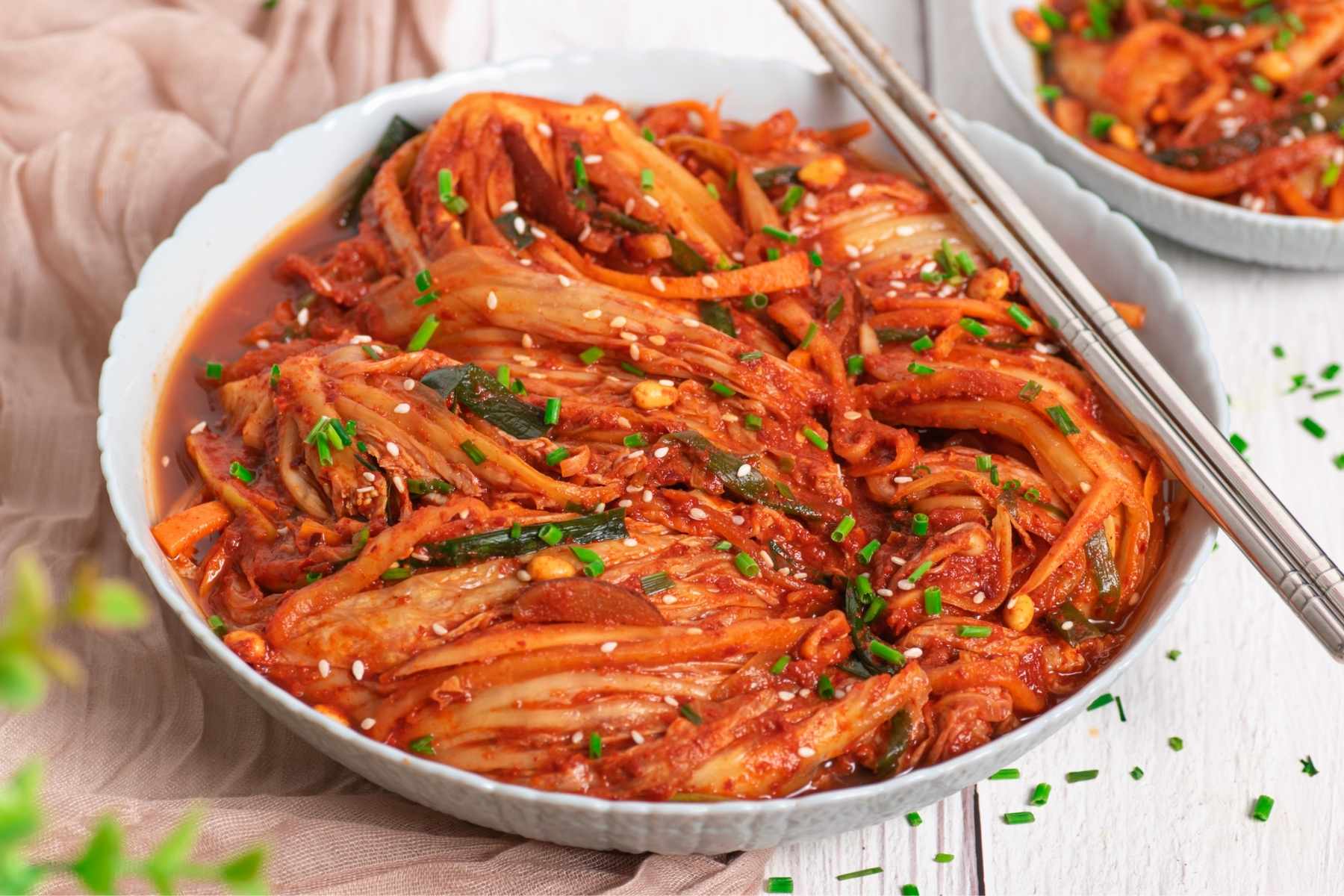zoomacademia.com – Kimchi is a traditional Korean dish that has gained worldwide recognition for its bold flavors, nutritional benefits, and cultural significance. Made primarily from fermented napa cabbage and radishes, kimchi is seasoned with a blend of garlic, ginger, chili powder, fish sauce, and other aromatic ingredients. This staple side dish is not only a key component of Korean cuisine but also a symbol of the country’s rich culinary heritage.
The process of making kimchi, known as “kimjang,” is a time-honored tradition in Korean households. Families gather together to prepare large quantities of kimchi, which are then stored to ferment over weeks or months. This communal activity fosters a sense of unity and preserves the culinary customs passed down through generations.
One of the most remarkable aspects of kimchi is its versatility. There are over 200 recognized varieties, each offering unique flavors and ingredients. Popular types include baechu kimchi (napa cabbage), kkakdugi (cubed radish), and oi sobagi (stuffed cucumber). Each regional variation reflects the diverse landscape and agricultural practices of Korea.
Kimchi is celebrated not only for its taste but also for its health benefits. Rich in vitamins A, B, and C, it is also a probiotic powerhouse, promoting gut health and aiding digestion. Studies suggest that the consumption of fermented foods like kimchi can boost the immune system and reduce inflammation.
As Korean culture continues to captivate global audiences, kimchi has found its way onto menus and dinner tables worldwide. Whether enjoyed as a side dish, in stews, or as a topping for rice and noodles, kimchi remains a beloved culinary treasure that bridges tradition and modernity.
For those eager to experience the authentic taste of kimchi, trying a homemade recipe or visiting a Korean restaurant offers a delightful introduction to this iconic dish. The journey into the world of kimchi promises a symphony of flavors and a deeper appreciation for Korean gastronomy.







